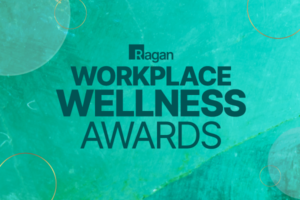Refining your employee value proposition with collaborative comms
An EVP is a great way to embed your comms competencies across HR, marketing and other business functions.

For many communicators, collaborating with other departments remains a great challenge. We know that providing our input on marketing copy before it’s sent out can catch potential risks or reputational red flags. We get that we can improve the talent search if given the chance to review job postings and updates to the career page before HR publishes them. But these collaborations don’t just happen, and we can’t expect our value to be immediately apparent.
That’s where being a strategic advisor comes in. Among projects that require effective collaboration, crafting an employee value proposition (EVP) is a great place to start getting strategic with your counsel.
EVPs are a key part of your organization’s employee branding strategy. They represent the values that your company brings to its workforce and include compensation, benefits, and culture. An EVP can also include policies around work-life balance, remote or displaced expectations, and anything else that accurately portrays the employee experience.
Ragan asked Cat Colella-Graham, professor at St. Francis College and founding member of Chief, to share her tips on creating EVPs that are inclusive of the right internal stakeholders. Here’s what we learned.
An EVP is an inclusive credo.
“Understand that your EVP is, in fact, a promise,” said Colella-Graham, professor at St. Francis College. “When you put one out there, if the lived experience is not aligned with that promise, you’re going to do more damage to your brand than if you didn’t put one out there.”
To that end, Colella-Graham likens an EVP to a credo that lets current and future employees know the organization’s commitment to them, along with the rest of the org’s stakeholders and the wider community.
“That goes across all stakeholders, and you need to be inclusive of who you include in the discussion,” Colella-Graham said. “You might see something as aspirational, but someone from finance or operations or sales may say, ‘This is what we’re hearing from customers and investors.’”
Being inclusive of other stakeholders will let you know you’re making promises that you can keep, and that you’re being real about what the expectation is for your EVP.
Above all, being inclusive of all stakeholders ensures that you’re looking out for who Colella-Graham calls ‘the forgotten stakeholders’ — your employees. And it ensures that you’re level-setting from the outset.
It all starts with the candidate experience.
Creating an inclusive EVP that protects the candidate experience starts with recruitment.
“If the candidate experience is 17 interviews and you hear from HR like four years later,” said Colella-Graham, “even if you’re a consumer of the same brand you wanted to work for, you’ll say ‘they’re not real at all.’ It’s gonna matter if you drag people through 70 interviews and never get back to them. You can’t keep people on the line like that.”
That situation, still all too common, is a good reminder that the cadence and timing of your communications matter. While communicators may understand this intuitively, HR may not.
“Recruiting should socialize cross-functionally,” Colella-Graham continued. “Not just your job openings, but what are your job descriptions? What are your key points of scope in the role?”
Data and future foresight can remind HR of your value
As a former HR lead who shifted to comms, Colella-Graham believes that one of the biggest gaps to bridge is the partnership between HR and comms.
“It is the biggest gap to bridge because HR thinks they can communicate when they can’t,” she said. “In most cases, they’re not understanding that the sole purpose of communicators is to drive behaviors — whether it’s trust, loyalty or whatever it is. HR needs comms to drive the behaviors they are trying to achieve.”
Though it may go without saying that these behaviors should ladder back to the values espoused in your EVP, this isn’t obvious to everyone. That’s where numbers come into play, as data can show other departments what messaging points will resonate.
“This is what’s gonna stick, this is what’s not, and here’s our data, metrics and analytics to show you,” Colella-Graham said.
Beyond numbers, increased concerns over the future of work and how it will impact our roles offer new chances for comms to inform the EVP creation process. While artificial intelligence (AI) tools like applicant tracking systems have grown more advanced and impacted the candidate experience, they aren’t gathering sentiment.
One such system may have a chat box that thanks the candidate for applying and asks if they have any specific questions. Then the candidate asks a question about the company’s sabbatical policy and waits 14 hours for a response. This is something that can be fixed with proper expectations for timely communication.
Help marketing see the full mirror.
In other instances, tools that scrape resumes for certain keywords may have biases built in that betray the EVP’s core values that comms can catch. Colella-Graham remembered conducting a website audit for a client to discover that their website only showed photos of male engineers.
“We really had to scrub that, think about the inclusion of pronouns and what would make some feel heard, feel valued as a candidate,” she said, “which would ultimately translate to the employee experience.”
Everyone’s got their own examples of tokenizing stock photos that are not realistic or representative of the workforce.
“If I see that five-star hand of all the different skin tones again, I’m going to lose my mind,” Colella Graham said with a laugh.
This is among the most common examples of how comms can also advise marketing on how to connect its strategies back to the EVP. And the tone-deaf stuff happens when marketing is soley focused on its message.
“You’ve got to think about who they’re trying to address and what they’re trying to achieve here,” said Colella-Graham. :If you’re looking to achieve diversity and the best candidates regardless of their race or creed, it’s about the spectrum of privilege. What about the people who may not have finished college, went to a college you’ve never heard of or are living in the middle of nowhere?”
These folks may be amazing candidates who can give you a lens that applies to the majority of your stakeholders, customers and investors along with the community in which you operate.
“But you’re not even trying to attract them because you’ve got this bolded, underlined messaging that doesn’t apply across different regions, sectors, races, religions and gender identifiers,” Colella-Graham said. “It’s the full mirror.”
Keep going.
Perhaps most importantly, Colella-Graham urges communicators to collaborate on EVPs with the intention of not being one-and-done.
“You need to make sure that you’re managing it and cultivating it, not just posting and walking away,” she said.
“Then a month later, check metrics to figure out what’s going to happen and how it’s going to reflect on you.”







